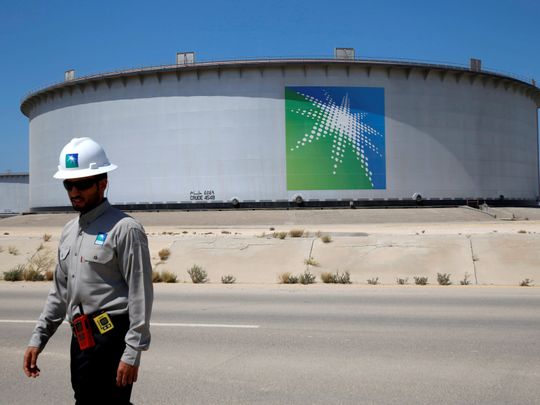
Dubai: In what could still be possibly the world’s biggest initial public offering, the state-owned oil colossus Saudi Aramco is still in search of a cornerstone investor.
In a market debut set to raise as much as $25.6 billion, slightly ahead of Chinese e-commerce titan Alibaba’s IPO of $25 billion in 2014, analysts expressed varied opinions on how the offering would finally pan out, but shared the common view that the offering was looking set to underwhelm.
“We see the IPO succeeding despite the rumors that it would be undersubscribed as the demand is enough to cover the IPO in the first week of its launch,” said Mohamed Zidan, Chief Market Strategist for ThinkMarkets in Dubai, but added that although it will be oversubscribed it won’t be by a “large percentage.”
“Signs are that it is unlikely to be the blockbuster sale that the kingdom once hoped for,” said William Jackson, chief emerging-markets economist at Capital Economics, adding that investor interest has not been as strong as expected as it now looks set to be a largely Saudi affair.
When Crown Prince Mohammed bin Salman first proposed the idea of listing Aramco in 2016, he targeted a 5 per cent listing, with part of it being on an exchange overseas, while achieving a valuation of $2 trillion.
“It’s now touch and go whether the sale will beat the record set by Alibaba and the proceeds would barely cover the budget deficit for a year,” Jackson added. “And plans for this sale to be followed by an international listing seem to have lost momentum.”
In recent weeks the company, which is yet to publicly secure a cornerstone investor, has reportedly met officials from the state-owned Investment Corporation of Dubai, the Abu Dhabi Investment Authority, the Kuwait Investment Authority and GIC, Singapore’s sovereign wealth fund.
WHY LOCAL?
Aramco did not market its domestic IPO abroad and called off its investor roadshows in New York and London. Analysts said one of the reasons why Aramco, officially Saudi Arabian Oil Co, kept the IPO local is because the firm saw adequate local and regional demand for what is offered.
Another reason may be because the company hopes to get the IPO priced at the upper band of the suggested price after being valued by Saudis and regional sovereign funds, Zidan said.
Aramco is selling shares priced between 30 riyals to 32 riyals apiece, which would give the IPO a maximum value of 96 billion Saudi riyals ($25.60 billion) or a lower valuation of $24 billion.
“We can consider it just the first stage in the offering, where later stages we may see the international offering,” he said, adding that however, “international investors now are cautious, and assuming risks and uncertainty more than what makes sense which would push the valuation lower.”
The timing of the IPO raised eyebrows too. Aramco pumps about 10 per cent of the world’s oil, but crude prices have fallen 16 per cent in the past year and growth outlook suggests it may drop further. An aerial attack on Aramco’s largest processing plant in mid-September also highlighted its vulnerability as well as the region’s heightened geopolitical tensions.
“Aramco has strong fundamentals when compared to its international peers,” Zidan said. “Some would suggest investing in the company stock could be consider like bond’s characteristics, not as an equity – which is more secure than stocks.”












